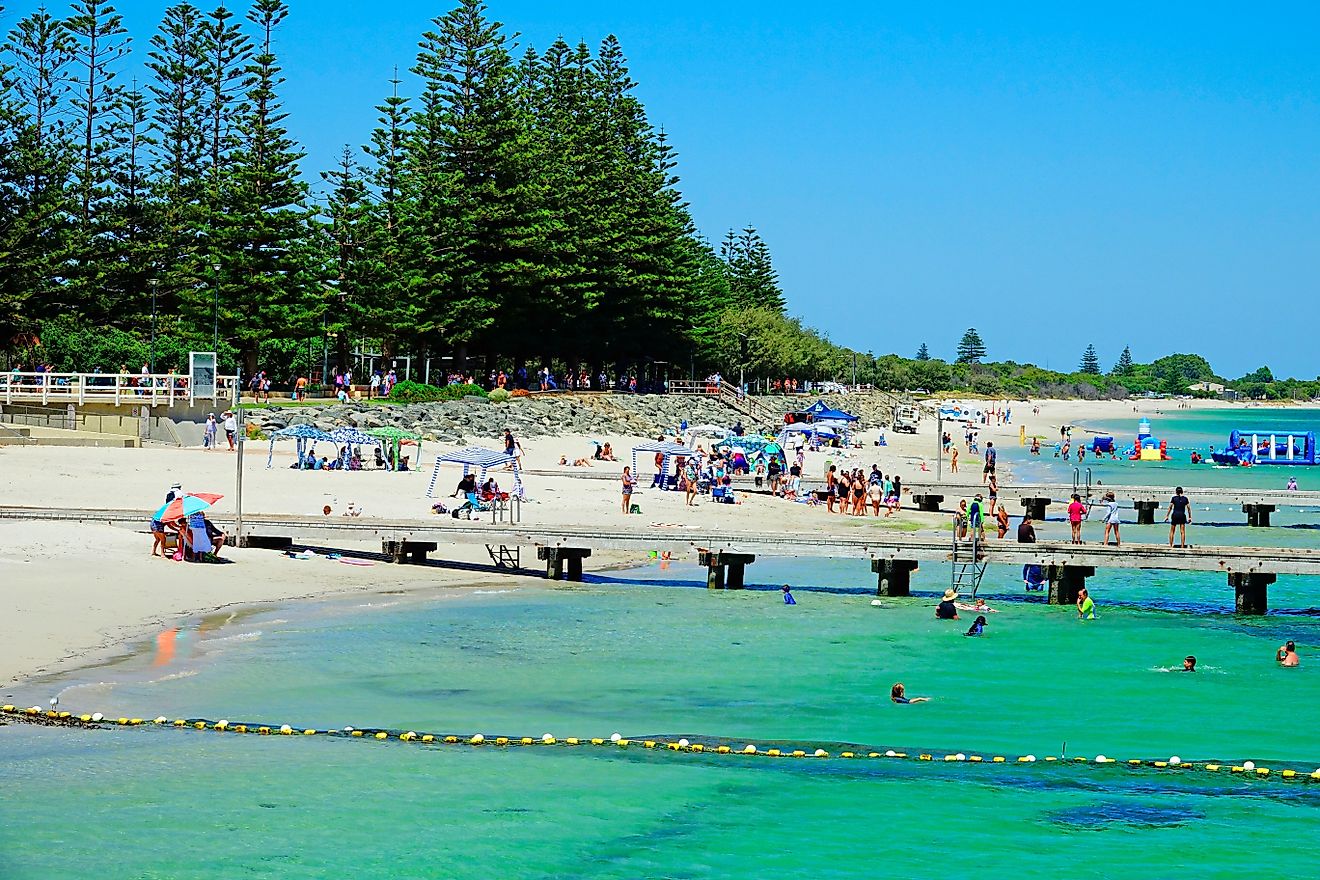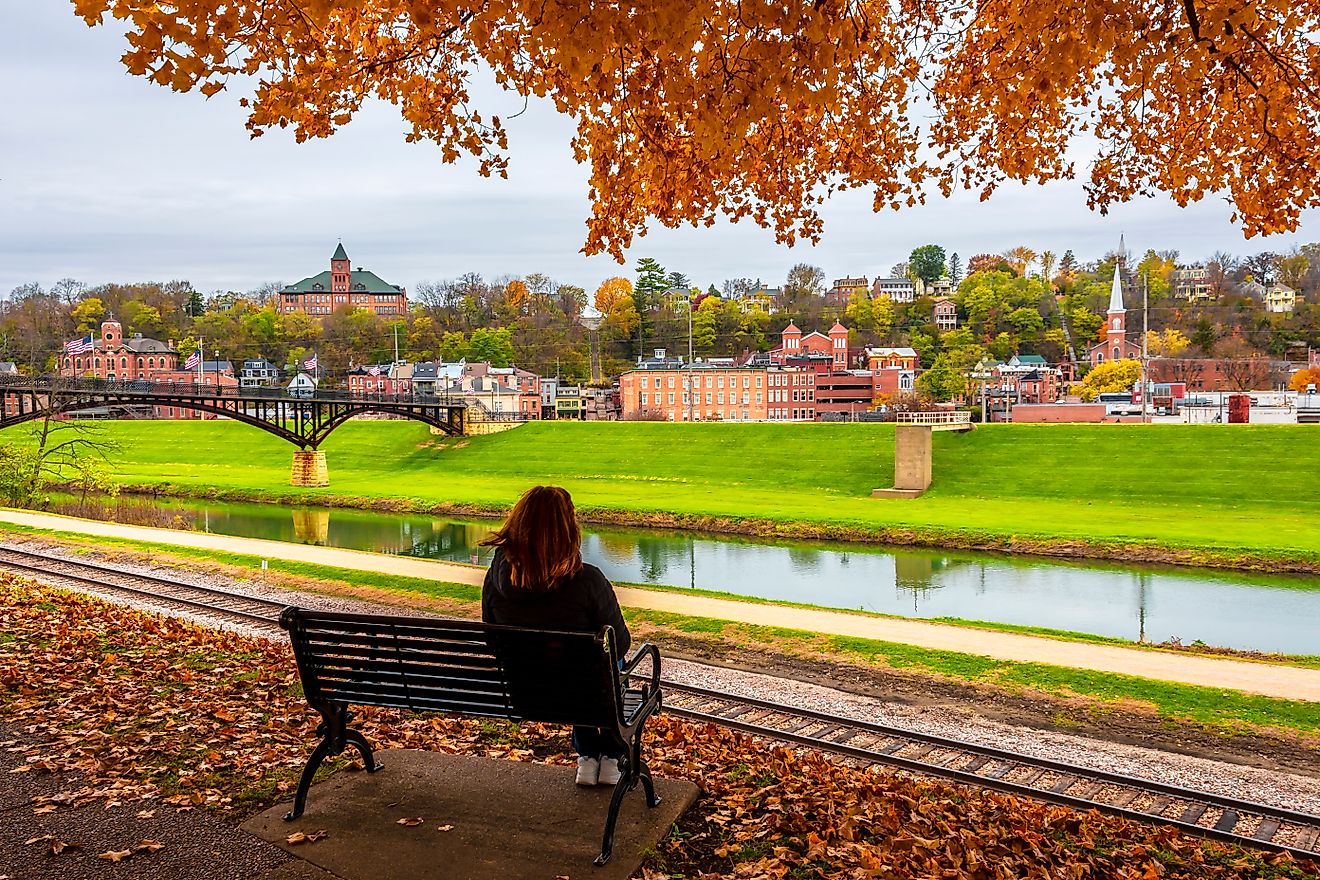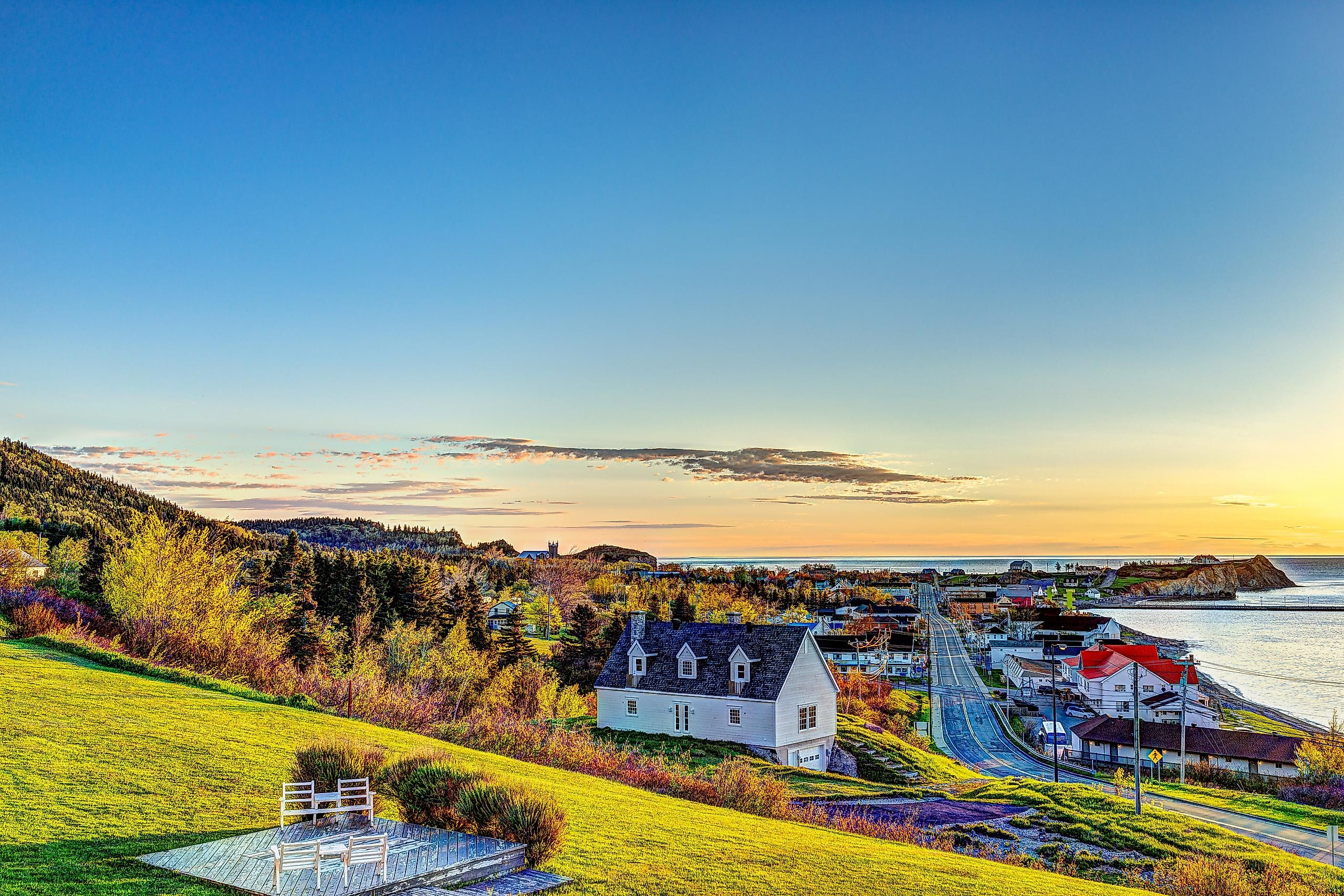
7 Off-The-Grid Quebec Towns To Visit In 2025
Quebec is celebrated for its rich culture, its legendary maple syrup, sharp-witted comedy scene, and fierce love for hockey, which are just the beginning. Beyond the bustle of Montreal and Quebec City, however, lie towns that whisper rather than shout. Travelers who venture off the usual route in 2025 will discover quiet parks, picturesque frame views of distant hills, and museums filled with the region’s history. In the northeast, Fermont stands resilient in the shadow of colossal mining operations, while far to the southeast, Percé greets the Gulf with towering rock formations and a lively arts scene. These seven off-the-grid Quebec towns invite you to slow your pace, embrace the language of the land, and experience a side of the province that lingers long after you leave.
Fermont
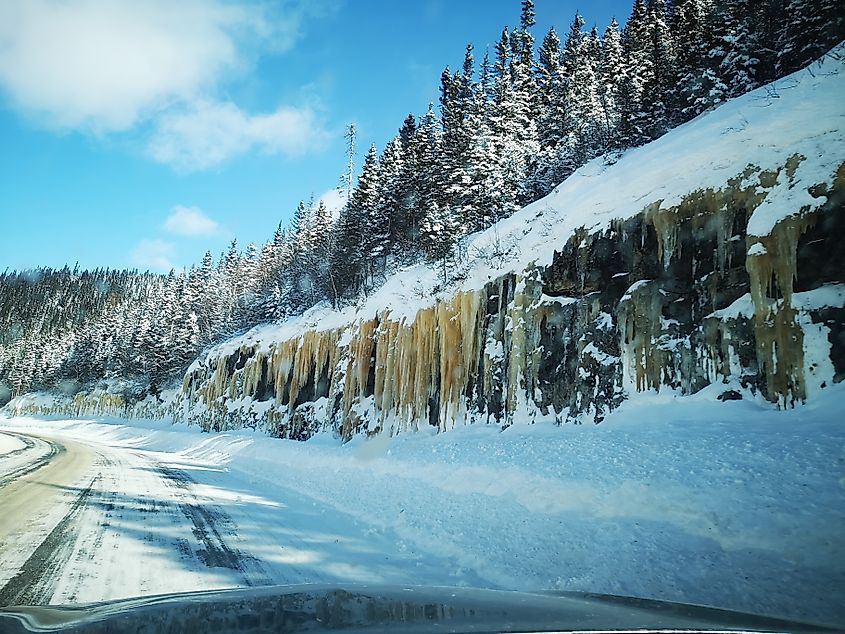
Fermont, far-flung in every sense, is a mining town perched deep in northern Quebec where winter bites hard and isolation shapes the rhythm of daily life. Over 80% of the town’s revenue flows from iron ore mining, the industry that shaped its past and still fuels its present. Mont Wright, once a towering mountain, has long since been carved into a 200-meter-deep pit, where mining equipment the size of houses rumble across the rock. The nearby Monts Severson rise to 830 feet and deliver a different kind of adventure with half a dozen trails. On the other hand, Lac Daviault, by contrast, is quiet and easygoing, where canoeing and paddle boarding fill the hours with stillness, and floating yoga sessions happen under an open sky.
Then there is the unmistakable Fermont Wall, a five-story, 1.3-kilometer structure built to block the harsh northern winds. But it is more than a windscreen: inside, it holds nearly everything, like shops, schools, a health center, and even a small bar, all under one roof.
Gaspé
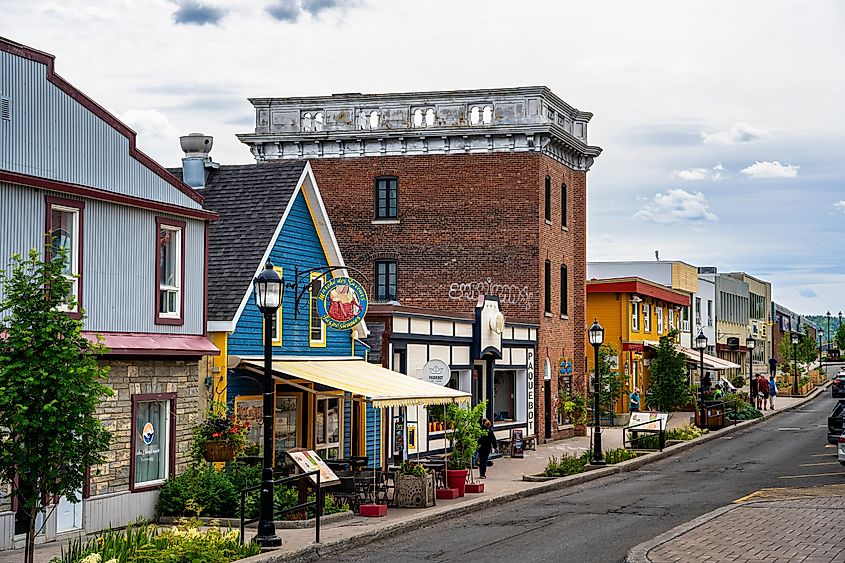
Tucked near the tip of the Gaspé Peninsula, this quiet town tells a deeper story than first impressions suggest. Gaspé is known to many as the birthplace of Canada, and a visit to the heritage village makes that history visible. The site recreates daily life in 1900 with a general store, tavern, photo shop, and a navy base. Costumed hosts welcome visitors from June to October, while a heritage trail, printed guide, and mobile app allow you to follow the past through downtown streets. From there, the natural side of Gaspé opens up in every direction. At Forillon National Park, nearly 250 square kilometers of coastline, cliffs, and wooded hills invite hikers, wildlife watchers, and those eager to spot whales from shore. The Les Graves trail leads to quiet viewpoints, while other paths rise into the edge of the Appalachians.
To the north, Pointe-à-la-Renommée marks a milestone in communication history. Once home to North America’s first maritime radio station, this lookout now features exhibits on Marconi’s work and the daily lives of lighthouse keepers stationed along the rocky coast. Back in town, the Gaspésie Museum ties the narrative together. With its newly expanded permanent exhibition, it traces 380 million years of the region’s development through geology, artifacts, and human stories, giving a layered view of a peninsula shaped by both time and tide.
Mont-Saint-Hilaire
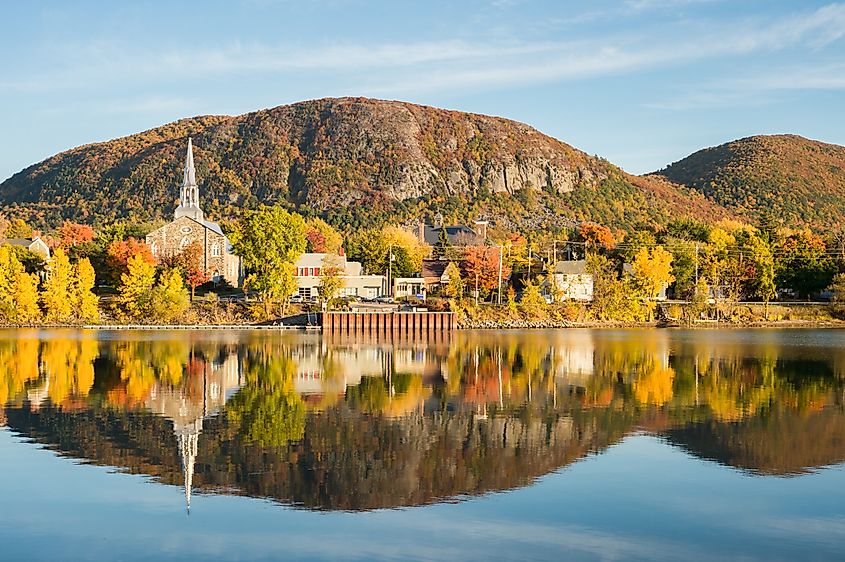
Mont-Saint-Hilaire sits quietly at the foot of its namesake mountain, drawing those who seek time in nature or quiet reflection. While a suburb of Montreal, it offers a unique calmness near the city. The town’s centerpiece is the Gault Nature Reserve, a protected area that spans over 2,400 acres and functions as both a private land reserve and a bird sanctuary. Open year-round, the Reserve maintains 25 kilometers of trails that wind through forested hillsides and lead to wide views of Lac Hartel. Rising above it all is the Mont Saint-Hilaire peak, standing 414 meters above sea level. Its multiple summits encircle Lac Hertel, a central lake formed by glacial movement that is now serving as a drinking water reservoir. While the lake is off-limits for recreational use, it remains a calm backdrop for walkers passing through nearby paths.
As you leave the trails behind, the town’s quiet rhythm continues with Paroisse Saint-Hilaire. Opened in 1837, it stands as a reminder of the region’s layered past, a place of stillness in a setting where nature and history quietly shape the landscape.
Rosemère
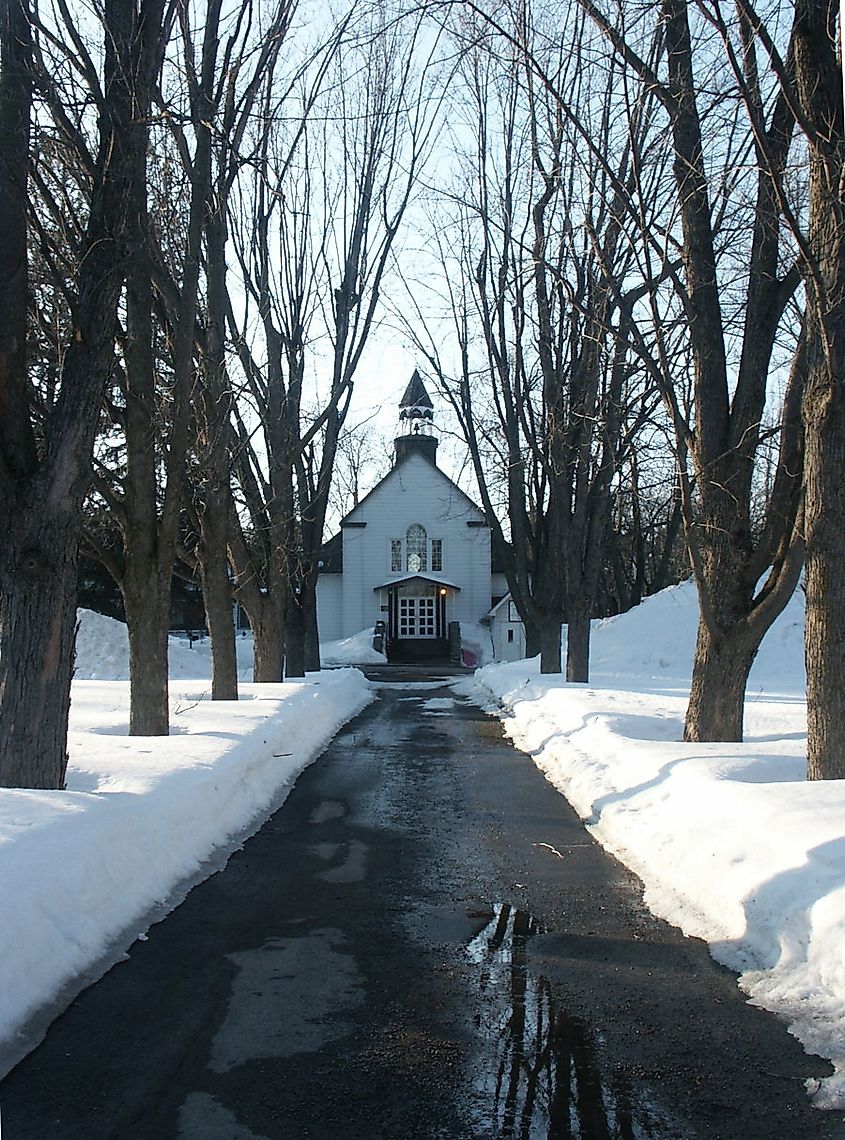
Rosemère is situated along the Rivière des Mille Îles, having a mix of water access and green trails just north of Montréal. Those drawn to outdoor activities often begin at Éco-Nature, where paddling is the focus. Canoes are available to rent for three hours, giving visitors time to explore the nearby marshes and calm waters at their own pace. Not far from there, Charbonneau Park adds to the open-air experience. Its open layout invites a slower pace, whether you are there to fish, picnic, or watch boats move across the lake.
For a view closer to the heart of town, head to Berge des Baigneurs. One of the few large riverside parks, it brings people together in a neighborhood setting, where wide paths and river views make room for walkers and cyclists. Alternatively, if a quiet path is what you are after, Marais Tylee rounds out the visit. This short out-and-back trail covers just over a mile and is easy to follow. It is best walked from May through January, and since the area stays fairly quiet, it is a good place to relax and listen to the sound of birds.
Deux-Montagnes

Deux-Montagnes, located near the shores of the Lake of Two Mountains, mixes natural habitats with historical depth. A good place to start exploring the town is the Boisé-Roger-Lemoine Nature Reserve, where around 20 acres of forest and marshland remain undisturbed. This preserved space shelters a variety of species, some of which are listed as threatened in Quebec. Visitors looking for open-air recreation can spend the day at Central Park. This local gathering space features baseball fields, soccer fields, and picnic areas. It is a good place to unwind or watch a community game on a summer afternoon.
For a deeper dive into the area’s past, Légaré Mill gives an authentic look at colonial industry. Built between 1762 and 1763, the site includes a functioning water-powered grist mill, the miller's residence, a dam, and a millpond. To complete the experience, the nearby Patrimoine culturel Vieux-Saint-Eustache adds cultural value. The area highlights preserved architecture, monuments, and documents that shed light on daily life in earlier centuries.
Amos
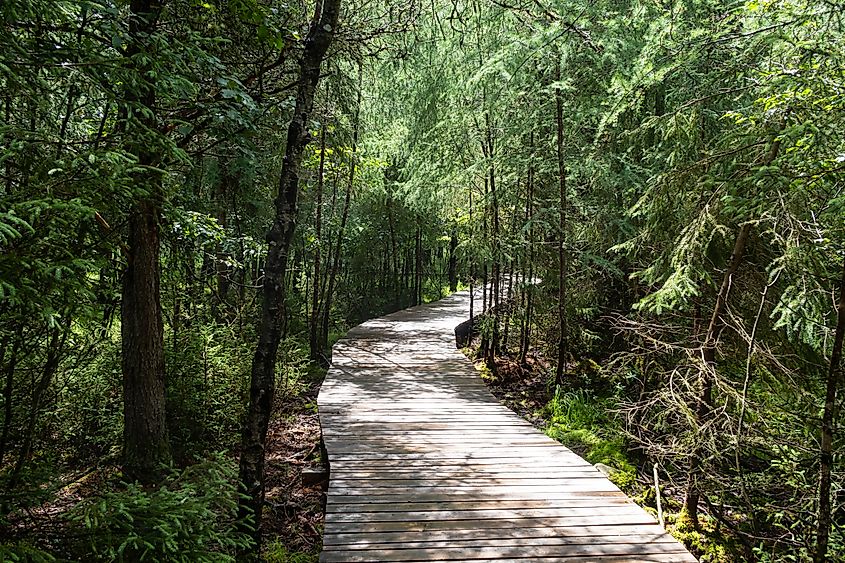
Tucked into the Abitibi region, Amos is a northern town shaped by its forests, waterways, and steady pace of life. Wildlife takes center stage at Refuge Pageau, where injured animals like moose and wolves from across the region are brought for care and rehabilitation. Some return to the wild once healed, while others remain as permanent residents due to long-term injuries or dependency on humans. The refuge allows quiet observation of these animals in a natural setting and introduces visitors to the stories behind each one. Not far from there, the Maison de la Culture draws people indoors. It stands in the center of Amos and houses rotating exhibitions from contemporary artists working across Quebec. The space is small, but the range of artwork offers a good window into regional creativity.
Furthermore, St. Teresa of Avila Cathedral rises over the town from its hilltop perch along the Harricana River. As the only Catholic cathedral in the Abitibi-Témiscamingue area, it serves both as a place of worship and as a historic marker that can be seen from miles away. To understand the history of this town, it is worth stopping at Maison Hector-Authier. Built as the first durable house in the area, it now serves as an interpretation site. Inside, displays explain the legacy of Hector Authier and the early days of settlement in the region.
Percé
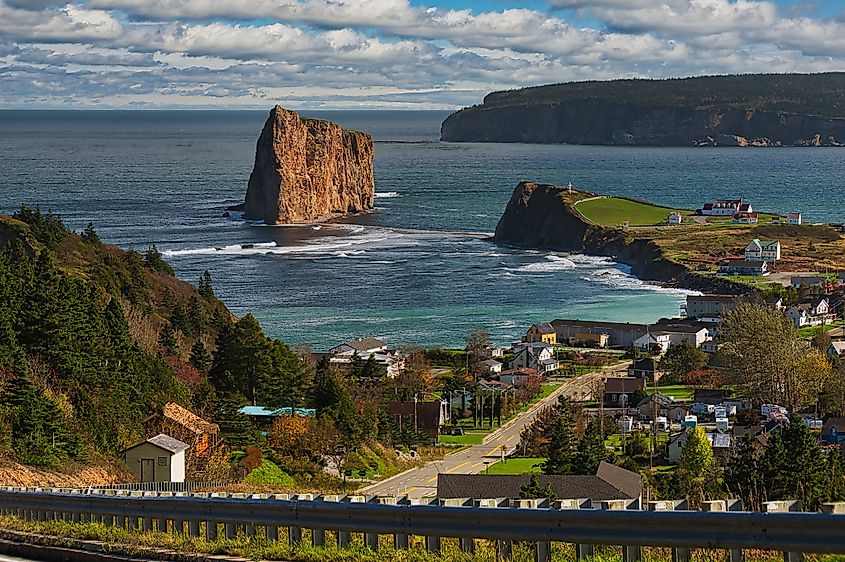
Percé, on the far edge of the Gaspé Peninsula, feels like a place paused in time, where sea cliffs meet salt air and days unfold with quiet intention. A member of the “Most Beautiful Villages of Quebec” association, it draws visitors from everywhere. Percé Rock is the town’s landmark, an immense limestone arch that appears to drift across the Gulf of Saint Lawrence. From certain angles, it resembles a ship mid-sail, especially at sunrise. Just beyond it, Bonaventure Island National Park gives access to cliffside trails and boat tours from May to October.
Meanwhile, Géoparc de Percé provides a more grounded kind of wonder. Its TEKTONIK pavilion recreates 500 million years of the Earth’s shifts, and trails along Mont Ste-Anne reveal dramatic lookouts, ancient seabeds, and fossils embedded in stone. In addition, Film lovers time their visit with Les Percéides, a local festival that screens films throughout town before ending with an outdoor gala on the beach. Families linger, feet in the sand, watching stories unfold under the stars.
Wrapping Up
These seven towns may sit away from Quebec’s more recognized destinations, but each one carries its charm, shaped by history, wilderness, and daily life that unfolds without rush. Whether it is walking forested trails in Rosemère or pausing by Lac Hertel in Mont-Saint-Hilaire, these places welcome visitors in quiet, steady ways. These towns don’t compete for attention; they simply continue, giving something lasting to those who take the time to look around.
